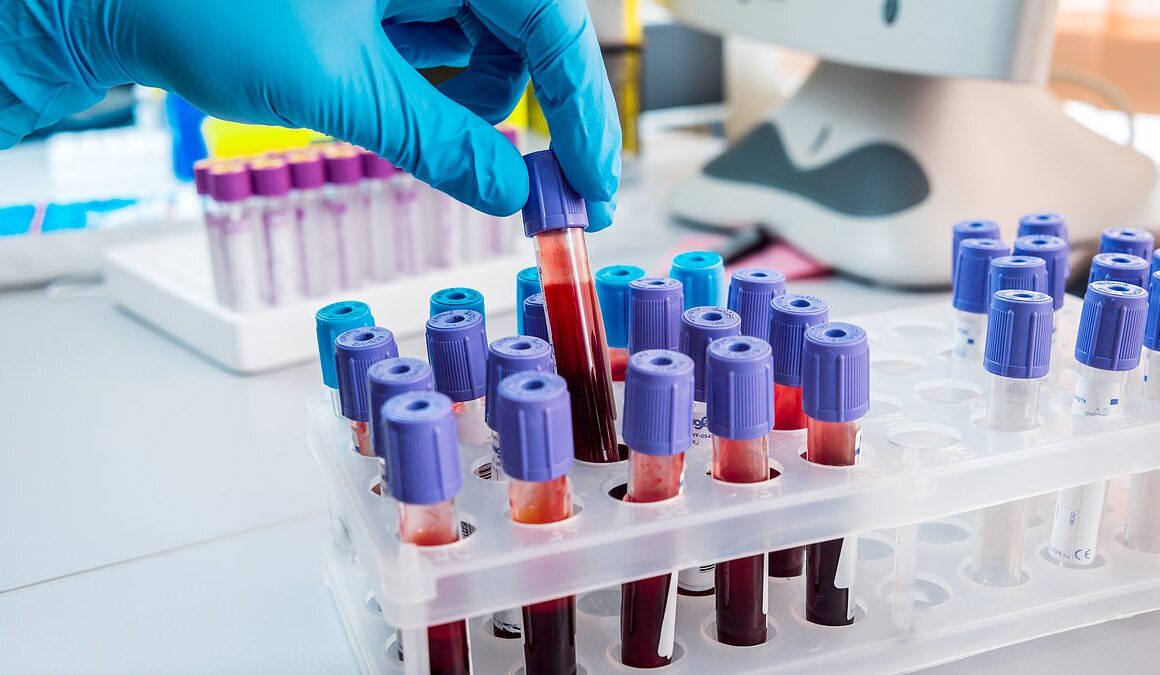New blood tests could help doctors diagnose Alzheimer’s disease faster and more accurately, a recent study revealed.
Alzheimer’s disease is the most common form of dementia and affects 6.7 million Americans. With the aging population booming in the US, that number is expected to grow to 13 million by 2050.
A study of 1,213 patients in Sweden between February 2020 and January 2024 published on Sunday found blood tests that focus on a form of a protein called tau was far more accurate at diagnosing the disease than doctors alone.
In the study, patients who visited either a primary care doctor or a specialist for memory complaints got an initial diagnosis using traditional exams, gave blood for testing and were sent for a confirmatory spinal tap or brain scan.
The primary care doctors’ initial diagnosis was 61 percent accurate and the specialists’ 73 percent — but the blood test was 91 percent accurate, according to the Lund University researchers’ findings.

New study found blood tests that focuses on a form of a protein called tau was far more accurate at diagnosing the disease than doctors alone

Scientists believe Alzheimer’s is likely to be the result of abnormal build-up of proteins — amyloid and tau — in and around brain cells
‘Not too long ago measuring pathology in the brain of a living human was considered just impossible,’ Dr. Jason Karlawish, a co-director of the Penn Memory Center at the University of Pennsylvania who was not involved in the research, told The New York Times.
‘This study adds to the revolution that has occurred in our ability to measure what’s going on in the brain of living humans.’
While the main cause of Alzheimer’s disease is still debated, scientists believe the damage is likely to be the result of abnormal build-up of proteins — amyloid and tau — in and around brain cells.
In Alzheimer’s patients, amyloid proteins are not effectively cleared from the body and eventually form plaques in the brain. Tau proteins detach from neurons to form tangles.
Both of these can lead to neuron death, which makes it difficult to deliver signals throughout the brain.
Blood tests measure a form of tau that correlates with how much plaque buildup someone has said Dr. Suzanne Schindler, a neurologist at Washington University in St. Louis.
A high level signals a strong likelihood the person has Alzheimer’s while a low level indicates that’s probably not the cause of memory loss.
Experts said blood testing should be limited to use only by doctors and researchers – and not widely available to the public.
They should only use blood tests proven to have a greater than 90 percent accuracy rate, said Alzheimer’s Association chief science officer Maria Carrillo.
The Alzheimer’s Association is working on guidelines and several companies plan to seek FDA approval, which would clarify proper use.
The tests are not for people who don’t have symptoms unless it’s part of enrollment in research studies, Schindler said.

Alzheimer’s disease is the most common form of dementia and affects 6.7 million Americans
That’s partly because amyloid buildup can begin two decades before the first sign of memory problems, and so far there are no preventive steps other than basic advice to eat healthy, exercise and get enough sleep.
There is currently no cure for Alzheimer’s and new drugs in development like donanemab – a twice-daily pill could reduce levels of a harmful brain protein called amyloid – only marginally slow the rate of progression and come with dangerous side effects like brain bleeding.
While the drug was hailed early on as a potential therapy, one-quarter of patients in the trial suffered brain swelling and three people died from brain swelling or bleeding that was attributed to the drug.
Another drug, Leqembi, works similarly to donanemab, but can also cause amyloid-related imaging abnormalities (ARIA), which are brain changes that can include bleeding and swelling.
It is FDA-approved but studies show about 20 percent of people who take the drug develop ARIA, but only 20 percent of those people experience symptoms.







